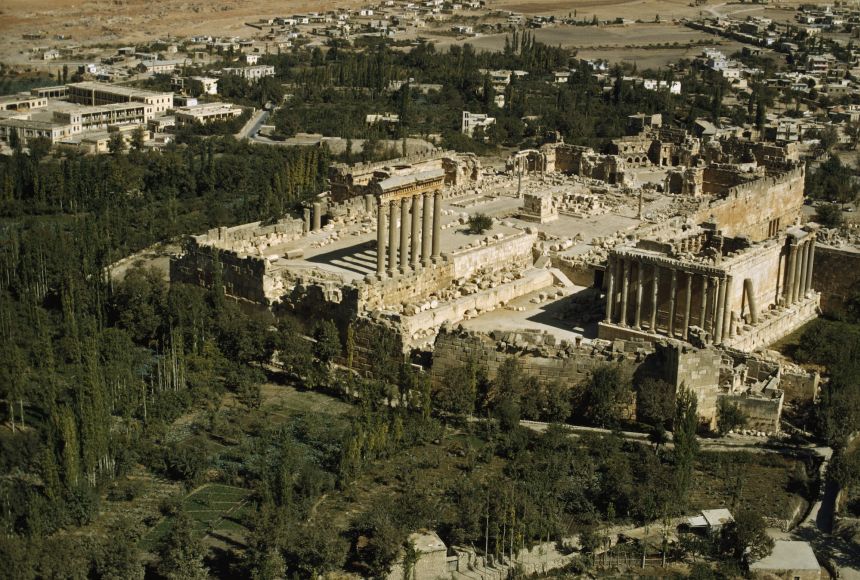The Roman Empire was a primarily polytheistic civilization, which meant that people recognized and worshiped multiple gods and goddesses. Despite the presence of monotheistic religions within the empire, such as Judaism and early Christianity, Romans honored multiple deities. They believed that these deities served a role in founding the Roman civilization and that they helped shape the events of people’s lives on a daily basis. Romans paid allegiance to the gods both in public spaces and in private homes. While the Roman state recognized main gods and goddesses by decorating public buildings and fountains with their images, families worshipping at home also put special emphasis on the deities of their choosing.
The gods and goddesses of Greek culture significantly influenced the development of Roman deities and mythology. Due to Rome’s geographic position, its citizens experienced frequent contact with the Greek peoples, who had expanded their territories into the Italian peninsula and Sicily. As the Roman Republic was rising to prominence, it acquired these Greek territories, bringing them under the administration of the Roman state. Romans adopted many aspects of Greek culture, adapting them slightly to suit their own needs. For example, many of the gods and goddesses of Greek and Roman culture share similar characteristics. However, these deities were renamed and effectively rebranded for a Roman context, possessing names that are different from their Greek counterparts.
The main god and goddesses in Roman culture were Jupiter, Juno, and Minerva. Jupiter was a sky-god who Romans believed oversaw all aspects of life; he is thought to have originated from the Greek god Zeus. Jupiter also concentrated on protecting the Roman state. Military commanders would pay homage to Jupiter at his temple after winning in battle.
Juno was Jupiter’s wife and sister. She resembled the Greek goddess Hera in that she kept a particularly watchful eye over women and all aspects of their lives. Minerva was the goddess of wisdom and craft. She watched over schoolchildren and craftspeople such as carpenters and stonemasons. Minerva is thought to be the equivalent of the goddess Athena, who was the Greek goddess of wisdom.
Other Roman gods and goddesses who were adapted from Greek culture include Venus, who drew on Aphrodite, goddess of love; Neptune, a sea god who was inspired by the Greek god Poseidon; Pluto, who ruled the Roman underworld as the god Hades did in Greek culture; Diana, Roman goddess of the hunt who had her Greek equivalent in Artemis; and Mars, god of war, who was fashioned after the Greek god Ares. Just as the Greeks influenced Roman culture, the Romans inspired the cultural development of later societies. You may by now have noticed that many of the planets in our solar system were named after Roman deities.
Rome did have some of its own gods and goddesses who did not trace their origins back to Greek culture. For example, Janus was a god with two faces that represented the spirit of passages such as doorways and gates. Believed to preside over beginnings, it is fitting that the month of January is named after Janus. Janus’ son was Tiberinus, the god of the river Tiber, which runs through the city of Rome.
According to Roman mythology, the gods had a hand in the founding of the city of Rome itself. Mars, god of war, and a Vestal Virgin named Rhea Silvia were the parents of twin boys, Romulus and Remus. Vestal Virgins were not permitted to marry or bear children but were instead to devote their lives to serving Vesta, goddess of the hearth.
It is said that King Amulius ordered that the twins be thrown into the Tiber River as a punishment to Rhea Silvia for betraying her vow of celibacy. Luckily, the boys were rescued from the river by a mother wolf. She helped to raise them until a local couple adopted them.
As the boys grew up, they became important members of the community. They dethroned King Amulius and worked together to establish a new city. In a later argument about the city, however, Romulus killed his brother Remus. Romulus went on to name the city after himself, calling it Rome (or Roma).
The presence and influence of gods and goddesses were integral parts of life in the Roman state. The people of Rome built temples to their gods and observed rituals and festivals to honor and celebrate them. Any favorable or unfavorable circumstances in Roman life could be attributed to the mood of certain gods, so people would likewise make offerings to the gods in thanks, or in an attempt to appease their tempers. Unlike many monotheistic religious or spiritual traditions, the Romans gods were seen as caring little about the morality of the Roman people. Rather, their chief concern was being paid tribute through very specific rituals.
We can still recognize traces of the Roman gods and goddesses in the artifacts that remain from the ancient civilization and the art that pays homage to them. Carvings of Janus still survive and statues of Neptune spout water from city fountains. Today we appreciate the stories and mythology built around these deities as insights into what life was like over 2,700 years ago for the ancient Romans.
